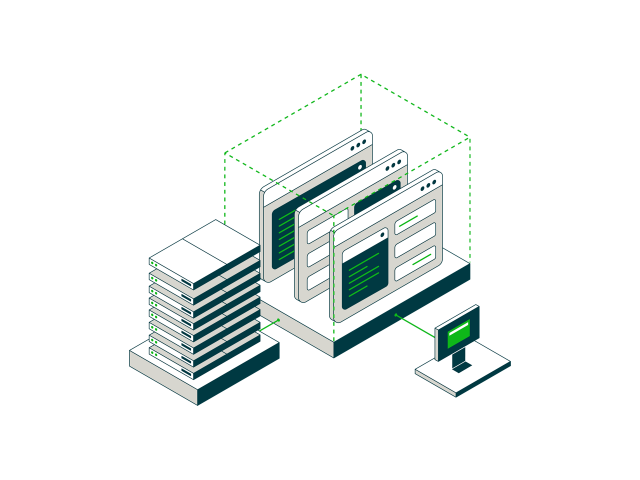With the axing of the VMware partner program, what are the options available for channel partners still committed to delivering that “ecosystem of trust”?
It’s been a rough ride for VMware’s channel partners over the holiday period, with the news breaking on December 22nd that VMware’s channel partner program, tagged an “ecosystem of trust” by them, was to be deprecated, with all partners losing all status and incentives and instead being replaced with Broadcom’s “invitation only” Advantage Partner Program, effective Feb. 5.
The “invitation only” bit is key. It’s widely expected that many (even most?) partners will not be invited to join the program, especially if Broadcom runs true to past form, focusing on serving the smallest possible number of most profitable customers (and therefore partners), creaming from the top the most profit from the smallest investment, and leaving other customers and partners hanging in the process.
If articles like January 4th’s in CRN are to be believed, this is the last straw for many VMware partners. They hung in there through the protracted acquisition process, but even for those that are invited to join the new program, it’s highly likely that they are mobilizing internally to have at least a couple of alternate offerings in place to offer their unhappy, and rightly worried and likely now mistrusting, VMware customers. For those not invited, the situation is even more urgent with, I’m sure, every partner wanting to maintain the “ecosystem of trust” they will have built up, often over many years, with their loyal customer base.
If not VMware then who or what are the options?
I have an obvious bias to declare here of course. I believe what we’ve achieved with HyperCloud delivers more than just replicating what VMware delivered over the last quarter century, and instead is designed for what is needed for today and for the future. More on that later. For channel partners though, as much as it is about putting the right product and strategy in front of customers, it’s also about the vendor that they will be working with, their faith in their vision and, of course, that they can build a long term, supportive and mutually profitable relationship.
So what, in broad brush terms, are the options out there, especially if the customer requirement is to keep workloads on premises?
Open source virtualization
There are plenty of open source projects out there that partners could bundle onto some hardware and offer to their customers if all they want is virtualized infrastructure. In our experience though, there’s a distinct difference between the IT teams and organizations that align themselves with open source solutions and those that don’t. And if simple virtualization is all the customer needed in the first place, then why wasn’t that the offer in the first place? The answer is often that the future requirements - the aspiration to build full private cloud infrastructure - drove a belief that this could ultimately be better achieved using VMware’s multi-layered (and licensed) product portfolio. In reality, the true complexity and cost of doing that means that projects were almost never fully completed. The true value of the strategy was never realized.
Trying to build a private cloud with open source is an even bigger ask, requiring not only multiple open source projects (all at differing levels of maturity) to be integrated, but also then the hardware infrastructure to be designed, delivered and maintained. Today, pretty much all new application development uses cloud-native tools and techniques. If the answer then is cloud, why does on-prem have to be so complicated? Surely the right option for customers is to put on the table the one that can actually deliver on that initial, yet unrealized, vision using a platform designed solely for that?
Hyperconverged
Likely when the customer chose VMware some years ago for their on-prem infrastructure, one alternate option they considered was a hyper-converged platform, combining storage, compute and virtualization into one solution. The promise was one of simplification of on-prem infrastructure. And indeed, especially in small simple deployments, that was often the case. Its limitations for larger, more complex deployments though have become all too apparent over the years, with many replacing the natively supplied virtualization with… VMware. Even the undisputed market leader, Nutanix, is now disaggregating what was once converged i.e. compute and storage, yet without increasing the ability to deploy at any scale. Even recent acquisitions seem unlikely to really transform their offer.
On the plus side, with a channel-friendly go-to-market strategy, Nutanix may seem like a safe, obvious, if uninspiring bet for many partners looking for an alternate on-prem offer. But how does it better support a cloud-native future? And how will partners be able to build long term advantage, both for their customers and themselves in what will likely become an over-distributed, undifferentiated and fiercely competitive market?
Consumption-based infrastructure
Some analysts believe that we’re also entering a phase where a large portion of on-prem infrastructure will transition from being purchased outright, supported based on yearly contracts, to one where instead vendors will provide that infrastructure, support it and, using a combination of their own and partner resources, charge customers for what they consume. HPE GreenLake are the leaders in delivering this kind of model today. It’s here where channel partners have a real dilemma though.
Part of being a trusted advisor for your customers is to maintain a degree of independence from the vendors that you choose to represent. By recommending a customer transition to one of these consumption-based models, not only are you effectively asking them to entrust their future IT strategy to the roadmap of a single vendor, you are also in effect removing your independence and ability to advise, instead simply becoming a “franchisee” and delivery partner for a model you do not control, either from a financial or technical perspective. Your ability both to add value and also to provide a differentiated offer to any other “franchisee” is severely curtailed.
But there’s more. Today these consumption-based infrastructure offers are not based on any kind of significant technical innovation. They are more a business model that hides the underlying complexity and bills it back based on what you used. A “complexity tax” if you will.
Surely, if customers want a way to buy infrastructure on a consumption basis, and partners want a way to offer that, then a better way has to be to build an independent, flexible and compelling offer, based on technology designed to enable that? One that doesn’t rely on the removal of complexity by brute force engineering, but instead by elegant technology - enabling partners to both offer a competitively priced model to their customers but also to have the scope (and margin) to deliver so much more unique value.
An “inflection point” for the VMware channel
In the days following the acquisition I wrote about how I believed that the transaction would force many VMware users to re-evaluate their use of this, now quarter century old, technology and consider the right forward strategy for a world where new applications, designed to run on cloud-native infrastructure are the new normal everywhere, including on -prem.
While I’m sure many VMware partners were already considering their strategic options, Broadcom’s moves can only have accelerated that process.
Talk to us. Have your partner talk to us
You’ll no doubt have seen SoftIron mentioned in numerous articles as a credible VMware alternative option over the last few weeks. We’re not trying to replicate what VMware did 25 years ago. We started with the problem that presents itself today. Where the end state - private cloud - is known, but the technologies available to deliver that were overly complex, severely limited and hard to maintain and secure. Top down, we built a platform that enables private clouds to be built quickly and simply, securely and elastically. We deliver that as a product set, and support it with a comprehensive channel program that enables our partners to add real differentiation and value - and do that profitably. To present their offer in any business model they choose. To blur the lines between product and service, between on-prem. and hybrid cloud, independent of any hyperscaler and without having to become a controlled “franchisee”. Your terms, your turf.
It works for our customers. It works for our partners. If we haven’t yet, let’s talk.






